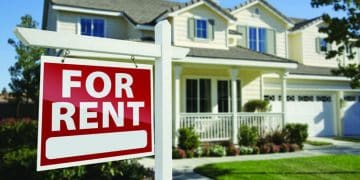Find Affordable Rental Homes That Fit Your Budget.
Anúncios
Finding a new place to live doesn’t have to break the bank. Whether you’re relocating due to a job change, pursuing your studies, or simply aiming for a more cost-effective way of life, choosing a rental property that aligns with your financial plans is essential.

Rental Homes (Photo: Reproduction/Zillow)
With the right planning, knowledge, and discipline, it’s entirely possible to find a comfortable and affordable rental without added stress. This expanded guide walks you through each step—offering tips, detailed insights, and practical tools to make confident housing decisions within your budget.
Anúncios
Step 1: Evaluate Your Financial Position Before Renting
Before diving into rental listings, it’s crucial to fully understand your financial capacity. This involves assessing your income, calculating recurring expenses, and setting a realistic budget for rent.
Plan for More Than Just Rent
Many renters make the mistake of focusing solely on the advertised rent price. However, other recurring costs like electricity, water, gas, garbage collection, renter’s insurance, and parking fees should be factored into your budget.
Set a Clear Monthly Limit
Financial experts recommend allocating no more than 30% of your gross monthly income to rent. Sticking to this rule of thumb helps you avoid financial strain while still covering all your essential needs.
Anúncios
Look Beyond the Monthly Rent
Sometimes, properties with slightly higher rent offer greater value through included amenities. Look for units with free internet, on-site laundry, or bundled utilities to maximize your budget.
Step 2: How to Keep Expenses Low During Your Lease
Once you’ve signed a lease, staying financially disciplined is key. Developing habits that keep costs under control will help you maintain long-term affordability.
Set Up a Rent and Bills Schedule
Use a calendar or budgeting app to track rent due dates, utility bills, and monthly payments. Automating payments can help prevent late fees and protect your credit score.
Practice Energy Efficiency
Switching to LED bulbs, sealing windows, and turning off unused appliances can lead to significant savings on electricity bills over time.
Negotiate and Clarify Fees
Always review your lease agreement in detail to identify all possible fees. Ask for clarity or consider negotiating if some charges seem unnecessary or excessive.
Step 3: Know What Makes a Rental Truly Affordable
A property isn’t affordable just because the rent is low. Consider the location, transportation options, commute time, access to groceries and medical facilities, and neighborhood safety when determining the true cost of living.
Be Strategic with Location
Living slightly outside a city center can drastically reduce rental costs. Explore suburbs, transit-friendly zones, or up-and-coming neighborhoods for better value.
FAQs: Renting Within Your Budget
- How much rent can I afford? Aim to spend no more than 30% of your gross monthly income on rent.
- Is it cheaper to live with roommates? Yes. Shared housing can reduce rent and utility bills significantly.
- Can I negotiate my rent? Absolutely. Especially if you’re a strong applicant with stable income and good references.
- What are hidden rental costs? Utilities, maintenance fees, move-in charges, pet fees, and parking costs are common extras.
- What should I ask before signing a lease? Confirm included services, repair responsibilities, penalty clauses, and lease duration.
Final Thoughts: Smart Renting is Empowering
Affordable renting isn’t just possible—it’s achievable with the right preparation, tools, and strategy. Stay informed, evaluate all costs, and act confidently. With patience and discipline, you’ll secure a rental that fits your lifestyle and budget perfectly.





